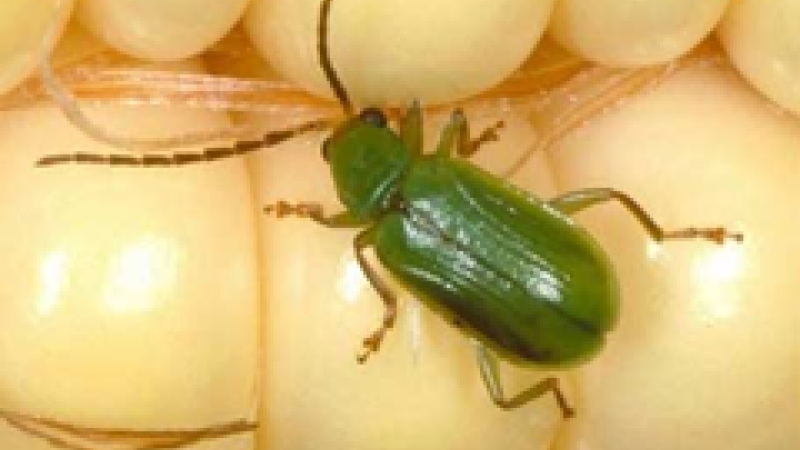Managing Corn Rootworms
The state of Iowa is one of the best corn producing states in the Unites States. With the potential for increased corn acres across the state and increased corn after corn acres managing corn rootworms is a major concern. Three species of rootworm found in Iowa include the northern corn rootworm (NCR), southern corn rootworm (SCR), and western corn rootworm (WCR).

Southern corn rootworms typically don’t cause economic injury to corn in Iowa. Northern and western corn rootworms are the most common rootworm pest that cause economic damage to our corn crop. Over the past 5-10 years northern and western corn rootworms have adapted where they lay their eggs. They have started to lay their eggs in fields adjacent to corn fields where the crop is not corn. Northern corn rootworms have one generation per year, but some NCR populations survive as eggs in the soil for multiple years, this is called extended diapause. Extended diapause is usually found in the Western part of Iowa, however has been found elsewhere as well. Where extended diapause occurs, first year corn can show economic impact where left untreated. When a western corn rootworm lays its eggs in fields containing other crops it is called the “soybean variant”. Typical corn-soybean rotation has been a great tool to control corn rootworms in the past. Rootworms have adapted by extended diapause in northern corn rootworm and the rootworm variant in western corn rootworms.

Once corn rootworm eggs hatch the larvae feed on corn roots and can potentially cause severe economic loss. For every node of roots pruned by larvae, expect a 15% yield loss on average (Tinsley et al. 2013). Monitoring fields in-season will assist you in identifying the problem and help improve your management strategy.
Management Tips
Bt traits have been the best tool we have to help us control corn rootworms. Using multiple types of Bt proteins in combination to control the same pest has been very successful. Where heavy rootworm populations exist, resistance has been observed to certain Bt proteins. Identifying where these populations are present and implementing a management plan is crucial.
The use of insecticides in furrow to control corn rootworms is a very successful way to assist in controlling rootworms. When using insecticides, make sure you rotate the mode of action used from year to year to ensure you don’t develop a resistant population to the product being used.
Where resistant populations are present, the best control is to use a combination of stacked Bt traits combined with in-furrow insecticide. This practice gives three or more modes of control to control the corn rootworms and a very low chance of resistance developing.
Scouting corn fields in early July for corn rootworm adults in high pressure fields is recommended. Where adult corn rootworm beetles are present we can predict where the eggs will be laid, and the larvae will be present next growing season. If the planned rotation is corn on corn for that field, an insecticide application with the proper timing will dramatically reduce the corn rootworm population that lays eggs and the potential economic impact for next year.
Corn rootworm is the number one economic pest effecting corn production in the Midwest. In some regions, the northern corn and western corn rootworms have adapted to traditional crop rotation management practices. Adjusting management practices, scouting fields and identifying extended diapause (NCR) and soybean variant (WCR) history can reduce future damage.
Corn rootworms continue to adapt and change their habits. Having a game plan before the season starts of using multiple control methods to control this pest is key to be good stewards and protecting the methods we must use to control this pest across the corn belt is paramount.
Product Options
Hoegemeyer has a full line-up of Qrome traited corn products. Hoegemeyer brand Qrome products are the most optimized balance of insect protection and agronomic performance in our corn product portfolio. These products are fully equipped with a triple stack of defensive traits and dual modes of action to defend against above and below ground pests, and offer an integrated refuge solution. Qrome products include a unique moleculat stack of the proven Bt proteins from Hercules I and Herculex RW traits. This new technology is the key to unlocking higher yield potential on your acres.

